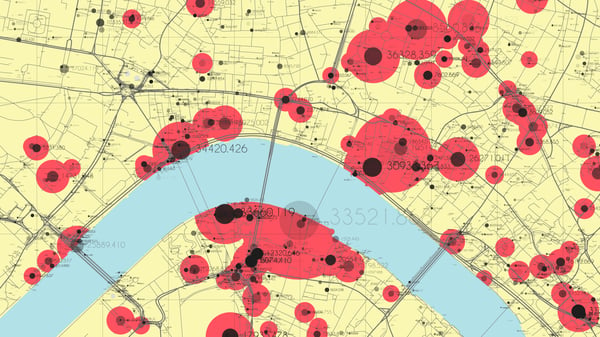4 Must-have Data Points for Dispatch-Billing Alignment and Maximum Reimbursement
Why Does Performance Matter in EMS?
If you have spent any time in EMS, chances are you have probably had a dispatcher (or two) say something along the lines of “whatever you can do to turn it around” or “you are going to have to drop and run, we have another call pending
Was this information valuable?

If you have spent any time in EMS, chances are you have probably had a dispatcher (or two) say something along the lines of “whatever you can do to turn it around” or “you are going to have to drop and run, we have another call pending.” After a deep cleansing breath, followed by some colorful adjectives that may or may not be ushered under your breath, you make haste in flipping the call so you can respond to the next… and then next… and then the next one after that. And just as you think you’re done for the day… oh wait, just one more to finish your day. Sound familiar? For many of us in busy EMS systems, this never-ending cycle is a daily occurrence, especially for those providers who perform non-emergent, routine transports. Why should a crew “turn it around quickly,” when the next call is just a discharge? Why does it matter? With the cycle seemingly spinning out of control, it can be easy to forget why performance matters, or why we should measure it in the first place.
EMS Performance Metrics for Non-Emergent Transports
How do we measure performance? One way that performance is measured is by establishing goals and standards and then measuring compliance with those goals and standards. Although measuring performance is not a new concept, the need to measure performance and the tools available to EMS services to measure performance have improved significantly over the past few years. The data that is now available to EMS services can provide an agency with a 360-degree view of their operations. Services can use performance and data measures in a wide variety of important applications such as clinical care and outcomes, operational efficiency, and revenue cycle management. It’s easy to argue why performance matters in traditional 911 EMS services. But let’s be honest, does an ambulance services on-time performance for discharges matter? The answer is a resounding yes! The performance of an EMS service regardless of whether they are exclusively a 911 provider or primarily perform non-emergent, routine transports, can have far reaching and lasting impacts to the healthcare system and ultimately, to the patient.
Is it a big deal that the ambulance is on time for the 12 p.m. discharge? To the hospital and healthcare system, yes it’s, a big deal.
How Does Performance Impact Systems & Patients?
Ask any hospital administrator what some of the current challenges are within their own system or within healthcare and chances are that “access to care” and “throughput” are somewhere near the top of the list. The ability to move patients into and around the healthcare system are some of the primary drivers for these challenges, to which, EMS is uniquely positioned to provide critical support. For many areas of the country, EMS services are the primary, if not only, access point into healthcare, particularly in the rural or super rural regions. Large and small hospitals and healthcare systems struggle with getting patients into the doors, because of the log jam of trying to get patients out the door. It’s recognized that there are many components to each of these issues and that EMS is just a small portion, our ability to impart a significant improvement is what the underlying message is.
Is it a big deal that the ambulance is on time for the 12 p.m. discharge? To the hospital and healthcare system, yes it’s, a big deal. From a system perspective, the bed that patient is in has already been reserved for another patient. The longer the discharge is delayed, the longer it will be until that emergency department patient is transferred upstairs, and the longer the potential wait is in the ER waiting area. Unnecessary and unexpected delays can have a profound domino effect that negatively impacts the system at large. It may seem like common sense, but being on time has huge benefits that extend well beyond our vision, something that may get lost as you respond to the “just one more.”
One action can start a cascade of additional actions that may be harmful or detrimental. It’s important to note that the reverse is also true, preventing one action may eliminate or stop a series of negative impacts.
From a patient perspective, the performance of EMS is more direct. A paramedic’s IV success rate or intubation success rate have a direct and noticeable effect on patient outcomes. The ability to interpret and treat based on a 12 lead EKG is another example where the performance of EMS has a direct impact. But what about indirect impacts? What is the impact when a patient is returning to a skilled nursing facility from an off-campus radiology appointment and the EMS crew is running an hour behind? The impact to that patient is often a bit subtler and less direct but the impact is unmistakable. There is the possibility that important daily medications may be missed or delayed, meals may be delayed, which may be problematic if the patient is a diabetic. Therapies such as PT and OT may be missed, which may affect the plan of care and discharge day. The potentially long lasting impact to a patient is often unrecognized and less dramatic. A thorough root cause analysis can highlight many improvement opportunities with this particular situation, and the EMS related portion may be just one part, but the important take-a-way is how one action can start a cascade of additional actions that may be harmful or detrimental. It’s important to note that the reverse is also true, preventing one action may eliminate or stop a series of negative impacts.
Make the Most of Your Metrics
The demands on today’s EMS providers and services are unparalleled. Call volumes continue to rise while resources continue to dwindle. Reimbursement doesn’t meet the cost to provide services, so agencies are asked to do more and more with less. EMS administrators and rank and file staff struggle to meet the demands expected of today’s EMS agencies. Likewise, healthcare across the country is in a struggle of its own. Unfortunately, it’s quite possible that many services may not be able to survive the struggle. This stark reality only adds to the frustration and fear of all of us in healthcare are feeling, so it’s easy to understand why recognizing why performance matters may be lost or forgotten. Performance metrics must be appropriately established based on legitimate data, monitored and acted upon. There are far too many stories where poor performance was used to discipline rather than encourage, coach and inspire. It’s also important that everyone understand the impact that good performance and poor performance have. Not just at a systems level but at the patient level as well.
Related Posts
How EMS Agencies Can Reframe Need and Refocus Resources With Geospatial Analytics
How To Minimize Radio Chatter and Reduce Guesswork With Smarter Dispatch Resource Management
ZOLL Pulse Blog
Subscribe to our blog and receive quality content that makes your job as an EMS & fire, hospital, or AR professional easier.
ZOLL Pulse Blog
Subscribe to our blog and receive quality content that makes your job as an EMS, fire, hospital, or AR professional easier.




